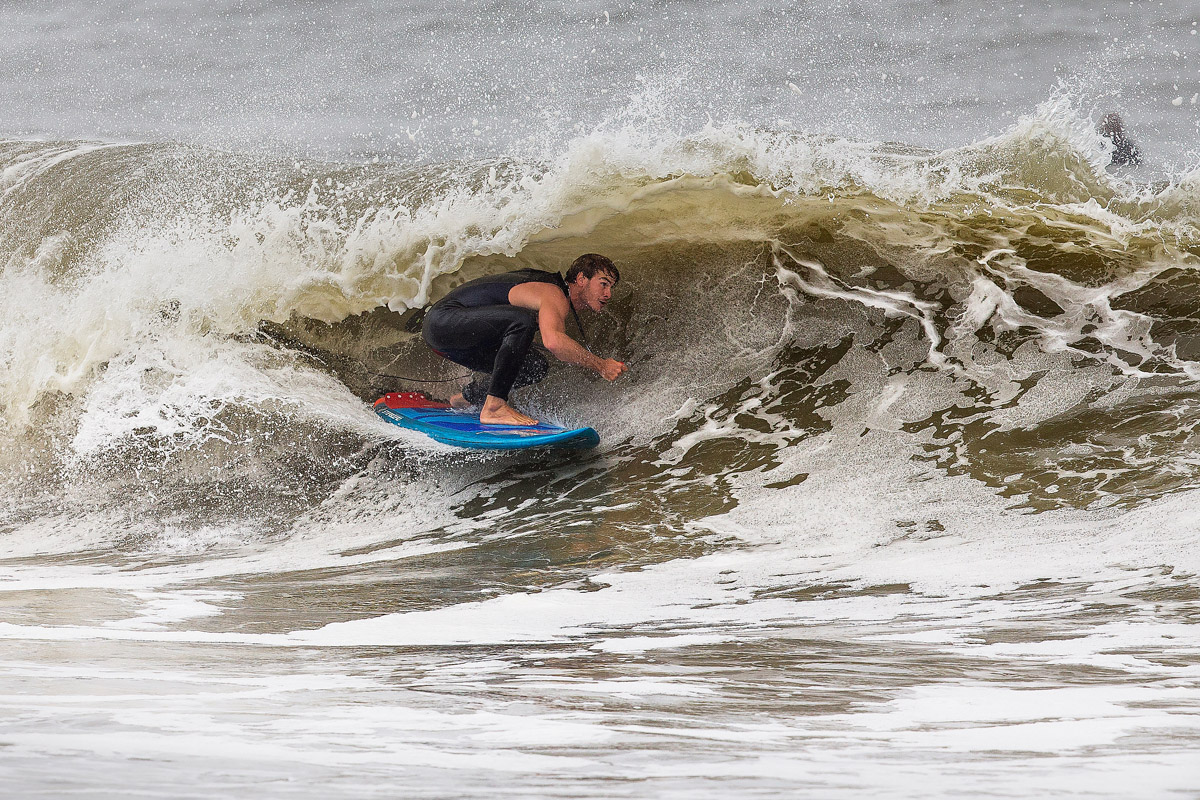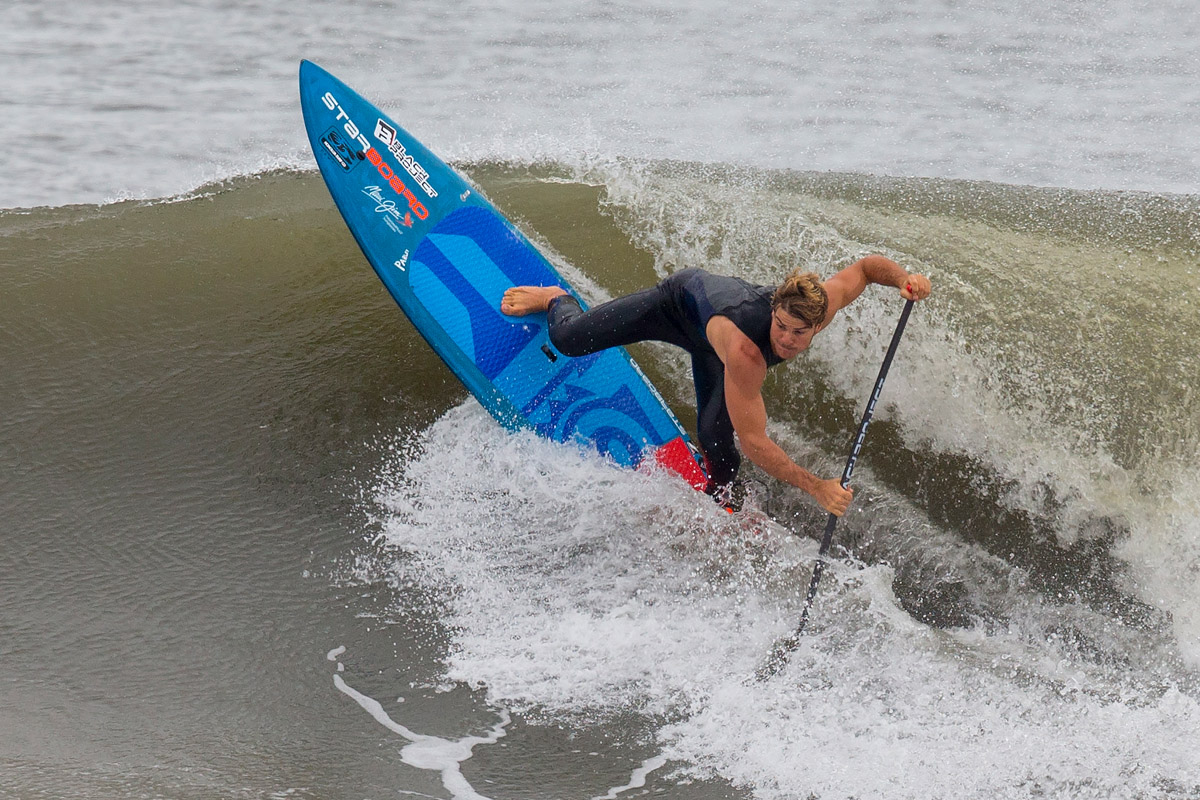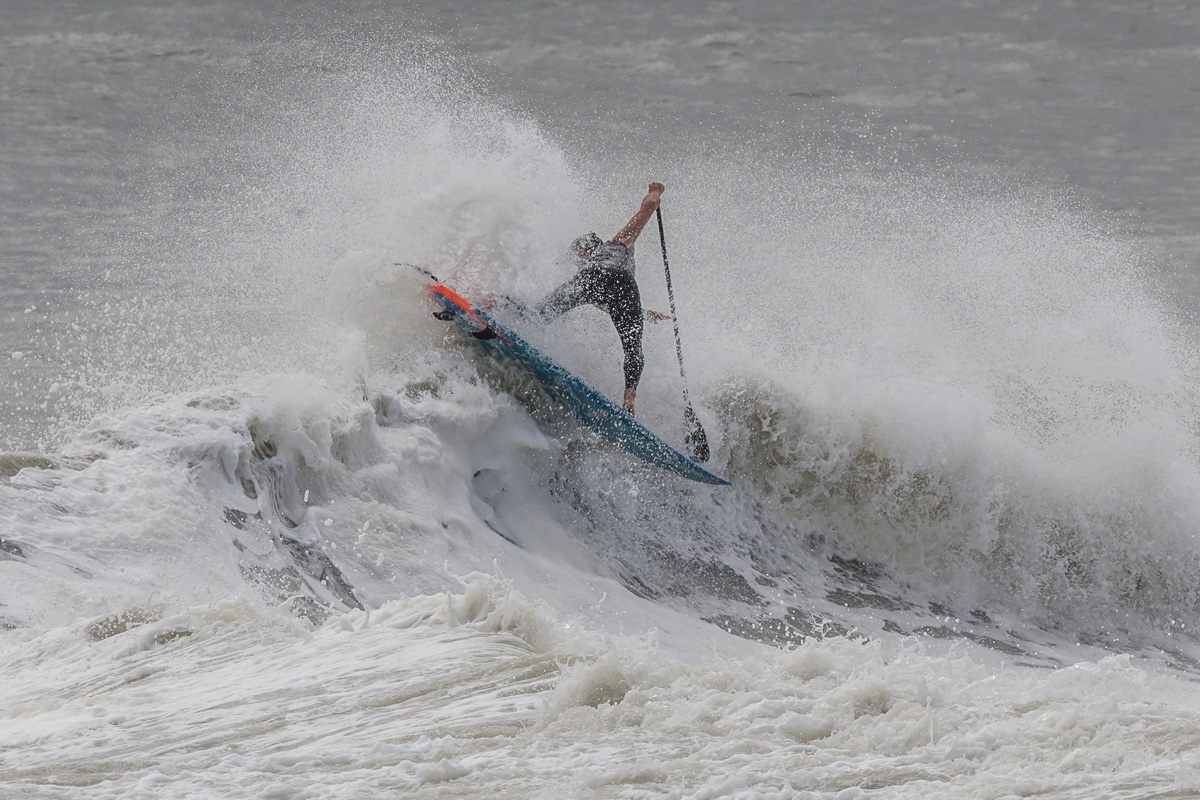Performance SUP surfing is harder than the pros make it look. Keeping upright around a lineup on a small SUP board is tricky in itself, and then come the challenges of catching and riding waves. Making it all look and feel good isn’t easy, but it’s also not impossible. A few solid SUP surfing tips might be all you need to step up your game, so we enlisted Maui’s world champion SUP surfer Zane Schweitzer for some fundamental advice. Add his techniques to your standup paddle repertoire and watch your performance improve. -MM
Overcoming whitewater
Paddling through whitewater on a SUP can be a pretty technical thing for someone new to SUP surfing. But with the right technique and some practice you’d be surprised at the waves you’ll be able to get over without falling.
With paddling out through whitewater, it’s easiest to break it down into three steps:
- Approach the wave with speed at a perpendicular angle in a staggered stance.
- Shift your feet into your surf stance as the whitewater approaches.
- Plant your paddle on the top of the whitewash to stroke hard up and over the wave, making sure your nose lifts up over the whitewater. Use your paddle to power through the whitewater and then to brace as you go over it.
Staying upright on small boards
The board I surf most is a 7’2” by 24”. It’s 68 liters in volume, which is pretty tricky to balance on and sinks unless I’m always paddling. The key to staying on top of it is to;
- Constantly have your paddle in the water for help balancing
- Use a slightly staggered stance.
A slightly staggered stance means my right foot is just in front of the left, so it’s not quite a parallel stance and not quite a surf stance, but somewhere comfortable in between. The reason is, in your straight stance you have little control nose to tail but you do have control left to right, while in your surf stance you have control nose to tail but not as much left to right. A slightly staggered stance gives you control both ways and makes it much easier to balance in surf.
The other key is to paddle constantly. On a board as small as mine, I’m sinking if I’m not paddling, so always having forward momentum is key. When your paddle is not working to paddle you forward, it should be bracing to help you balance.
Getting into waves
Paddling with short, quick strokes is critical to getting into waves. I get really deep and low with my front knee bent, and paddle with “chopped” strokes—short, high-cadence, powerful strokes—to get the needed push into the wave. Those chopped strokes are what gets the board planing with enough speed to catch a wave. The other important aspect of getting into waves is in your stance. I’ll approach the wave in a staggered stance with as much speed as I can get from chopped strokes, then just before I’m in position to catch the wave I switch into my surf stance.
‘Porpoise’ pumping
When the wave is approaching and you’re in position, from your surf stance you can do what I call ‘porpoising’ your board. To do this you pump your front foot up and down to create a motion that help’s propel your board forward into the wave. From there you can stroke in synch with the popping of the board, so as your paddle enters the water you push down on your front foot, and as you pull back you lift your weight to let the nose rise. With this technique you can control your weight distribution with your front knee to create extra speed. Getting this down is really important for catching smaller waves on smaller boards.
Paddle-enhanced turns
Once you’re up and riding, use your paddle to push and pull yourself through turns. This is key to maneuvering the board on the wave face, which is especially helpful in smaller or less powerful waves. I keep my paddle in the water as much as I can while I’m up and riding a wave. I paddle forward to help with speed and control, and push or pull on it to add power in turns.
“At the end of the day this is paddle-enhanced surfing.”
With turning it’s all about the push and pull. Whether you’re pushing on the paddle to brace yourself through a bottom turn or pulling yourself through a turn with a powerful wide stroke that wraps around the tail, the paddle plays a huge role in maneuvering on the wave. At the end of the day this is paddle-enhanced surfing. I wouldn’t be able to turn any of my standup paddleboards without using my paddle.
MORE SUP RESOURCES
Learn about the ZANE Pro Model SUP Surfing Fins
Meet the Surge: The World’s Best SUP Surfing Paddle
Choosing a Paddle – Advice from World Champion SUP Racer and Surfer Mo Freitas
SUP Stroke: The Proper Phases of A Standup Paddle Race Stroke
Words: Mike Misselwitz & Zane Schweitzer
Pics: APP World Tour / John Carter
Video: Matty Schweitzer & Zane Schweitzer
Follow Zane on Instagram @Zaniac1









